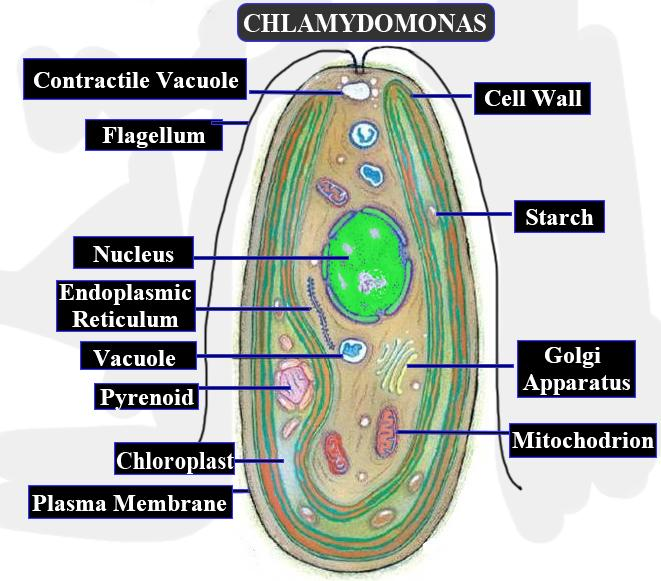
Isogamy, anisogamy and oogamy types of sexual reproduction occur in
(a)Mucor
(b)Monocystis
(c)Spirogyra
(d)Chlamydomonas
Answer
495.9k+ views
Hint: They are a unicellular organism in which a single cell constitutes the whole organism. They are a large genus and are found almost in all places. It is mainly found in freshwater rich in nitrogen salts and organic matter.
Complete answer:
In Chlamydomonas, sexual reproduction occurs by isogamy, anisogamy, or oogamy. In Isogamy the gametes are of similar size and shape. These gametes are not classified as male or female. It is observed in Chlamydomonas. Anisogamy is the fusion between two gametes which are either dissimilar in size or in both size and morphology. It is observed in Chlamydomonas. Oogamy is a type of anisogamy. The male gamete is smaller in size than the female gamete. All of these are observed in Chlamydomonas.
Additional Information: Morphology features of Chlamydomonas
- Motile unicellular algae.
- Generally oval.
- Cell wall is formed from glycoprotein and non-cellulosic polysaccharides rather than cellulose.
- Two anteriorly inserted whiplash flagella
- Contractile vacuoles are near the bases of flagella.
- Prominent cups or bowl-shaped chloroplast is present.
- The nucleus is enclosed during a cup-shaped chloroplast.
- Eyespots present within the anterior portion of the chloroplast.
- They are generally found in habitats rich in ammonium salt.
So, the correct answer is ‘Chlamydomonas’.
Note: It appears that isogamy was the primary stage of sexual reproduction. In several lineages (plants, animals), this type of reproduction independently evolved to anisogamous species with gametes of male and female types to oogamous species during which the female gamete is extremely much larger than the male and has no ability to move.

Complete answer:
In Chlamydomonas, sexual reproduction occurs by isogamy, anisogamy, or oogamy. In Isogamy the gametes are of similar size and shape. These gametes are not classified as male or female. It is observed in Chlamydomonas. Anisogamy is the fusion between two gametes which are either dissimilar in size or in both size and morphology. It is observed in Chlamydomonas. Oogamy is a type of anisogamy. The male gamete is smaller in size than the female gamete. All of these are observed in Chlamydomonas.
Additional Information: Morphology features of Chlamydomonas
- Motile unicellular algae.
- Generally oval.
- Cell wall is formed from glycoprotein and non-cellulosic polysaccharides rather than cellulose.
- Two anteriorly inserted whiplash flagella
- Contractile vacuoles are near the bases of flagella.
- Prominent cups or bowl-shaped chloroplast is present.
- The nucleus is enclosed during a cup-shaped chloroplast.
- Eyespots present within the anterior portion of the chloroplast.
- They are generally found in habitats rich in ammonium salt.
So, the correct answer is ‘Chlamydomonas’.
Note: It appears that isogamy was the primary stage of sexual reproduction. In several lineages (plants, animals), this type of reproduction independently evolved to anisogamous species with gametes of male and female types to oogamous species during which the female gamete is extremely much larger than the male and has no ability to move.

Recently Updated Pages
Master Class 12 Economics: Engaging Questions & Answers for Success

Master Class 12 Maths: Engaging Questions & Answers for Success

Master Class 12 Biology: Engaging Questions & Answers for Success

Master Class 12 Physics: Engaging Questions & Answers for Success

Master Class 4 Maths: Engaging Questions & Answers for Success

Master Class 4 English: Engaging Questions & Answers for Success

Trending doubts
What are the major means of transport Explain each class 12 social science CBSE

What is the difference between resemblance and sem class 12 social science CBSE

Why do the transition elements have higher enthalpies class 12 chemistry CBSE

In forest ecosystem pyramid of number is a Upright class 12 biology CBSE

The first microscope was invented by A Leeuwenhoek class 12 biology CBSE

Which of the following is a renewable resource A Natural class 12 physics CBSE




